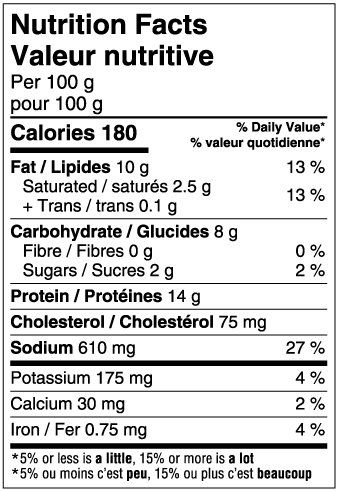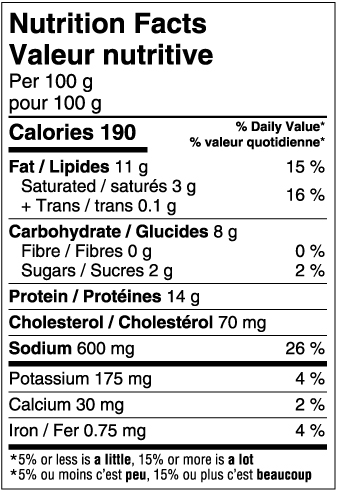Palm Trees vs Coconut Trees: What’s the Difference?

Palm trees and coconut trees often get confused as the same type of tree. However, while they do share some similar characteristics, they are quite distinct from each other.
We explain the key differences between palm trees and coconut trees, from physical traits to climates they grow in.
What is a Palm Tree?
Palms encompass a wide variety of trees under the broader biological family known as Arecaceae. Over 2,600 unique palm tree species exist that mostly thrive in the world’s tropical and subtropical regions.
As monocots instead of dicots like other trees, palms have unique anatomy lacking secondary growth from wood and bark tissue. Instead, stem diameter expansion occurs via primary growth of giant parenchymal cells. Such cellular biology lends the signature single thick trunk or stem typical of palm species. Fronds of fan-shaped or feather-shaped leaves crown palms’ apex points.
What is a Coconut Tree?
The coconut tree (cocos nucifera) is a tropical palm that grows up to 30 meters (98 feet) tall. Its long, pinnate leaves and sturdy trunk are characteristic features. Coconuts, obtained from this tree, provide various products: edible coconut fruit, coconut water, coconut oil, and plant-based milk. Additionally, the hard shell yields charcoal and coir, while the sweet sap can be fermented into palm wine or coconut vinegar. Culturally significant, coconut trees feature in myths, songs, and rituals across tropical regions.
Trunk Shape and Height
One prominent visible discriminator involves trunk morphology, specifically height and girth proportions. Most palm species exhibit relatively slender single trunks averaging only 30 – 45 ft in height. Certain palms like the California Fan Palm may reach maximum heights around 70 – 80 ft.
Coconut palms also grow much taller, commonly surpassing 100 ft at maturity. Reports abound across the tropics of gargantuan coconut palms exceeding 115 ft from base to frond tips!
In addition to the taller stance, coconut trunks also bulk wider at the base compared to most palm types. Such wide tapering gives coconut palms greater stability against strong winds and storms in coastal areas where they thrive.
Ideal Climate
Palm species number vastly across sub-Saharan Africa, South Asia, Southeast Asia, parts of Oceania, and Central & South America swathes. Such immense botanical family diversification allows different palm tree types to inhabit varied settings including:
- Desert Palm Oases
- Tropical Rainforests
- Inland Subtropical Plains
- Highland Cloud Forests
- Temperate Oceanic Coasts
So we find cold-hardy Windmill palms growing in coastal Virginia. Contrast those to tropical Pritchardia fan palms dotting Hawaii’s rainforests. The two species thrive thousands of miles apart under sharply divergent climates!
However, coconut palms prove far more fastidious, demanding specific conditions met to bear coconuts globally in demand. Commercial coconut production occurs where average annual temperatures hover steadily around 27 C (80 F) without frost or freezing.
Abundant circulation of warm, humid air also necessitates coconut palms’ viability. They perform well in sandy or alluvial soils, with freshwater access facilitating lush growth. Beyond these narrow climate requirements, coconut yields decline or fail outright.
Such fussiness limits where coconut palms flourish compared to adaptable date and Chusan palms, for example. Favorable coconut zones largely dot the equatorial tropics near warm seaside locations. The plant essentially serves as a bio-indicator of optimum intertropical convergence zones.
Reproduction
Both palm and coconut palm species bear reproductive parts for propagation purposes as flowering plants. However, the specific structures differ markedly by shape and function.
General palm tree flowers emerge in dense clusters upon maturity. The actual blooms comprise mini three-petaled formations with a superior ovary structure. Depending on the type, the flowers may house either male or female reproductive organs. The versatile date palm, for instance, bears perfect flowers with both sexes’ parts, being self-pollinating. Yet the popular areca palm tree produces distinct male and female blooms on separate palm specimens.
In contrast, coconut palm flowering apparatus and mechanics operate uniquely. Large spear-shaped spathes extend out from tightened lowest fronds, sheltering spadix structures harboring the actual small buds. Upon development, tiny male and female flowers bloom distinctly on separate spikelets of the same spadix.
Rising humid air conveys pollen from male flowers to receptive female ones on the same tree. Following successful fertilization, the distinctive sphere-shaped mature coconut begins growing.
Utility
Both palm and coconut palms proved useful to humanity for ages by supplying materials for shelter, fuel, food, medicine, tools, and other applications. However, the sheer diversity across palm species produces an eclectic range of goods.
Multipurpose date palms offer sweet, edible fruits, thatch leaves, wood, fibers, alcoholic beverages, jaggery sugar, livestock feed, and more. Meanwhile, the stout Moluccan palms called sago yield starch harvested from the spongy centre of their wide trunks. Carnauba palms exude a signature wax-protecting foliage that gets refined for automotive and cosmetic waxes. And the compact parlor palm commonly decorates indoor spaces with its delicate tropical flair.
However, the coconut palm gives us one extraordinarily versatile product – the coconut fruit itself. No other palm offering has permeated human culture, cuisine, health traditions, and commerce so profoundly as the coconut.
The Health Benefits of Coconut Water
Coconut water, obtained from young green coconuts, offers a refreshing and nutritious beverage. Straight from the freshly chopped coconut, this liquid is packed with electrolytes. Unlike other palm crops, coconut water contains a unique blend of natural salts, vitamins, minerals, and antioxidants that contribute to human health. Notably, it is rich in cytokinins and lauric acid, which have anti-aging and anti-microbial properties. Additionally, coconut water serves as an effective oral rehydration tonic, surpassing commercial sports drinks.
Research shows that coconut water’s electrolyte constitution, including potassium, sodium, magnesium, and calcium, actually hydrates people after exercise more effectively than leading sports beverages. Thus, both athletes and pregnant women facing fluid loss find coconut water an ideal way to restore hydration, energy, and nutritional balance.
The isotonic nature of coconut water, meaning its inherent mineral content equals blood plasma levels, facilitates smooth nutrient absorption by cells. This balances bodily processes during physical exertion and pregnancy stages, when hydration needs spike.
Coconut Products for Cooking
Coconut products, such as coconut sugar, milk, cream, and oils extracted from the coconut, are especially popular in Caribbean cuisine.
Coconut also provides flavor and texture to confections like macaroons. Coconut flour and coconut aminos also serve specialty baking and cooking needs for those avoiding gluten, soy, or dairy.
The Bottom Line
While sharing the Arecaceae taxonomic class, palm trees and coconut palms differ substantially in structure, climate adaptations, and human usage. Coconut palms’ immense height on trunk-like stems, tolerance only for warm, humid equatorial environs, and esteemed coconuts contrast them from general palm trees thriving under diverse conditions for varied ethnobotanical purposes.
In terms of the coconut tree, no other palm crop has so profoundly permeated human diet, health practices, culture, and commerce.






